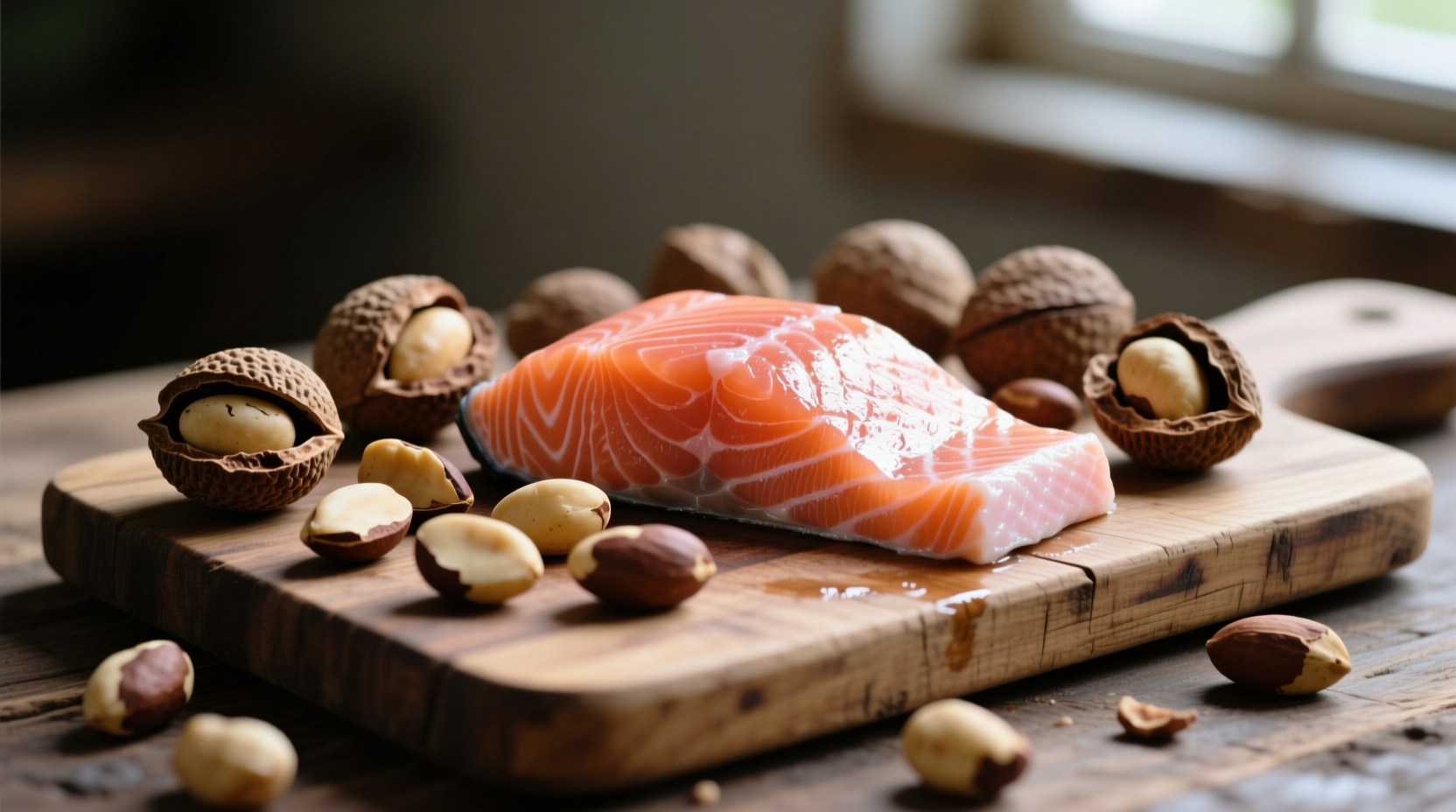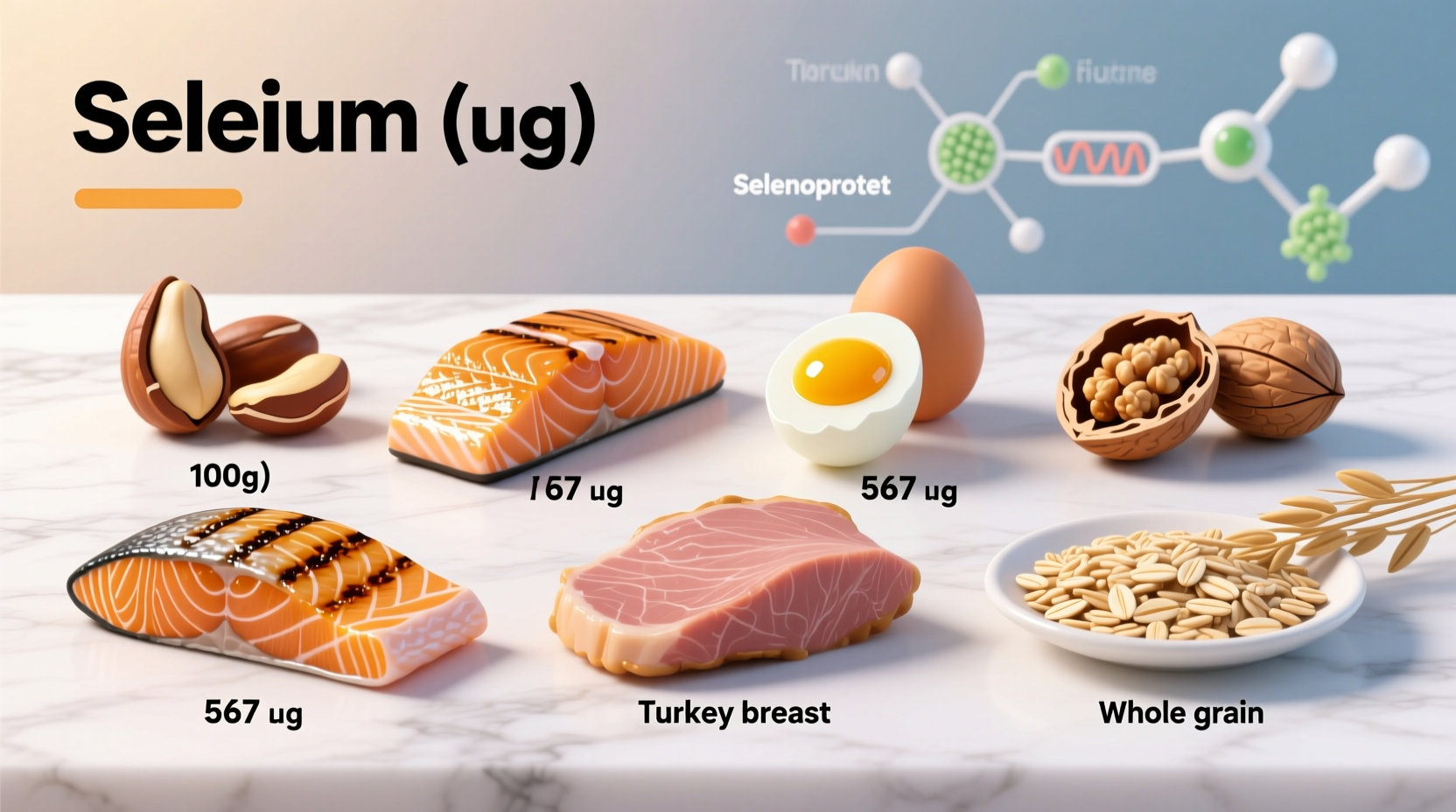When searching for what food has high selenium, you need precise, science-backed information you can trust. Selenium deficiency affects over 1 billion people worldwide according to the World Health Organization, yet most aren't aware which dietary sources deliver optimal amounts. This guide reveals exactly which foods contain the highest selenium concentrations with verified nutrient data from authoritative sources.
Why Selenium Matters More Than You Think
Selenium isn't just another mineral—it's a critical component of 25+ selenoproteins that regulate vital bodily functions. The National Institutes of Health confirms selenium's essential role in:
- Thyroid hormone metabolism (converting T4 to active T3)
- Antioxidant defense systems (glutathione peroxidase activity)
- Immune cell function and inflammation regulation
- DNA synthesis and cancer protection mechanisms
Adults require 55 mcg daily, but certain populations—like those with thyroid conditions or living in selenium-poor soil regions—may need more. The upper limit is 400 mcg daily; exceeding this consistently risks selenosis with symptoms like hair loss and nail brittleness.
Top 7 Selenium Powerhouses Ranked by Nutrient Density
| Food Source | Serving Size | Selenium (mcg) | % Daily Value |
|---|---|---|---|
| Brazil nuts | 1 ounce (6-8 nuts) | 544 | 989% |
| Yellowfin tuna | 3 ounces cooked | 92 | 167% |
| Halibut | 3 ounces cooked | 47 | 85% |
| Sardines | 3 ounces canned | 45 | 82% |
| Beef steak | 3 ounces cooked | 33 | 60% |
| Chicken breast | 3 ounces cooked | 22 | 40% |
| Eggs | 1 large | 15 | 27% |
Data sourced from USDA FoodData Central (2023 release), the most comprehensive nutrient database maintained by the U.S. Department of Agriculture. Note that selenium content varies based on soil conditions where plants are grown or animals are raised—Brazil nuts from Brazil's selenium-rich soil contain significantly more than those from other regions.
Seafood: The Most Reliable Selenium Source
Fatty fish consistently rank among the top selenium sources due to ocean bioaccumulation. A 2022 American Journal of Clinical Nutrition study tracking selenium intake across 15 countries found that populations consuming regular seafood had 37% higher selenium status than land-based diets alone. Wild-caught fish generally contain more selenium than farmed varieties due to natural feeding patterns.

Plant-Based Options for Selenium Intake
While animal products dominate selenium rankings, strategic plant choices deliver meaningful amounts:
- Brazil nuts: Just one nut (about 5g) contains 68-91 mcg selenium—more than the daily requirement. Consume no more than 1-2 daily to avoid excess.
- Oatmeal: 1 cup cooked provides 13 mcg (24% DV), making it an excellent breakfast option.
- Brown rice: 1 cup cooked delivers 19 mcg (35% DV), though white rice contains significantly less.
- Spinach: 1 cup cooked offers 11 mcg (20% DV) plus synergistic nutrients like vitamin C.
Important context: Plant-based selenium has lower bioavailability (about 80%) compared to animal sources (90%) due to differences in selenomethionine vs. selenocysteine forms. Pairing plant selenium sources with vitamin C-rich foods enhances absorption.
Practical Selenium-Boosting Strategies
Maximize your selenium intake with these evidence-based approaches:
- Rotate protein sources: Alternate between fish, poultry, and lean meats throughout the week
- Strategic nut consumption: Add 1 Brazil nut to morning smoothies instead of handfuls
- Soil awareness: When possible, choose produce from selenium-rich regions (Great Plains, Pacific Northwest)
- Cooking methods: Baking and grilling preserve selenium better than boiling, which can leach minerals
Who Should Monitor Selenium Intake Closely?
Certain populations require special consideration:
- Thyroid disorder patients: Those with Hashimoto's or Graves' disease often have increased selenium needs
- Vegetarians/vegans: Plant-based diets typically provide 20-30% less selenium than omnivorous diets
- People in low-selenium regions: China's Keshan region and parts of Europe have documented deficiency issues
- Pregnant women: Requirements increase to 60 mcg daily for fetal development
The European Food Safety Authority notes that soil selenium levels have declined 50% in some agricultural regions over the past 50 years due to intensive farming practices, making conscious food selection more important than ever.











 浙公网安备
33010002000092号
浙公网安备
33010002000092号 浙B2-20120091-4
浙B2-20120091-4